Have you ever wanted to do something creative, but you couldn’t make yourself actually sit down and do the work?
Well, here’s some good news: you’re not alone! Many of us struggle to reach our dreams because we are fighting against powerful inner blocks like procrastination, distraction, self-doubt, and fear.
The War of Art promises to show us how to overcome these creative blocks and become highly productive. You’ll learn how to fight back against Resistance, that devious enemy inside all of us. This battle won’t always feel nice. Yet many online reviewers say the message was exactly what they needed to hear, like a good kick in the backside. By the end, you’ll understand what separates true Professionals in any craft from the Amateurs.
Who is Steven Pressfield?
Steven Pressfield (author website) is a bestselling author with over a dozen books published. During his career, he’s written historical fiction, non-fiction, movie screenplays and even advertising copy. He wrote for 27 years and failed many times, until his first novel The Legend of Bagger Vance was finally published in 1995. Five years later, it was turned into a major Hollywood movie starring actors like Matt Damon and Will Smith.
⛔ 1. Recognize Resistance: The inner force that sabotages our dreams
Resistance is the name Steven Pressfield gives to the invisible force inside of us that stops us from doing creative work. Resistance makes us avoid sitting down to start working. It makes us feel paralyzed about sharing our work with the world. It blocks us from finishing projects we’ve been working on forever.
Here are some common symptoms of Resistance, many of which you’ll probably be familiar with:
- Feelings: fear, dread or reluctance around our work.
- Thoughts: excuses and convincing rationalizations for our procrastination.
- Habits: giving in to Resistance feels terrible, so afterwards we overindulge in distraction, consumption, and addictions. (Like our phones, food, shopping, pleasure, alcohol or drugs.)
Pressfield believes the best way to overcome Resistance is by ‘personifying’ it. That means seeing it as an outside force that is trying to trick us, and then fighting against it directly. After all, this book is NOT called the EASE of Art, but the WAR of Art!
(This idea reminds me of how some religious people center their lives around fighting the Devil, which is like a personification of all their bad impulses. In fact, there’s a fascinating section near the end of this book highlighting similarities between creative artists and religious fundamentalists…)
Resistance is an invisible force that blocks us from starting or finishing our creative projects. It sabotages us, makes us feel scared, and gives us convincing excuses for procrastination. Giving in to Resistance feels terrible, causing us to overindulge in consumption and distractions.
😨 2. Expect Fear: It’s normal to feel scared before sitting down
Steven Pressfield has written many popular books, fiction and non-fiction. But he says that every morning when he wakes up, he STILL feels reluctance and dread in his stomach.
Then he sits down to write anyway.
And that’s really the main point in this book: Your creative work will really take off when you accept that it’s normal to feel emotions like fear, self-doubt, and “not wanting to do it.” (Isn’t it so funny that we can dream of making a living as an artist, but then feel so bad to sit down and make art? Personally, whenever I’ve felt that way, after a few minutes of working the bad feeling fades.)
Here are three more fascinating points about fear:
- Fear is a fact of life for creatives. Listen to interviews with famous actors and you’ll soon find out some of them vomit before a performance, or can’t stand to watch the movie after it’s finished because of how self-critical they are.
- Fear is a signal of importance. A strong feeling shows that you value something, like when a parent is scared for their child. Pressfield believes feeling scared is a great indicator that we must do the project.
- Fear is proof of growth. When we’re repeating our old routine, then we feel safe and comfortable. When we’re trying something new, especially something a bit outside our current abilities, then we start to feel that inner tension.
I think a lot of that creative fear comes from wanting to protect our social reputation. If we create something and it fails publicly, then we may feel rejected, judged, or humiliated.
Well, did you know that a couple thousand years ago, even Roman emperors had similar worries? That’s right, the emperor Marcus Aurelius kept a private journal, where he wrote about his fears. After all, not only did he suffer vicious attacks on his reputation that were politically motivated, but he even had to worry about assassination attempts!
More importantly, Marcus wrote some powerful insight about overcoming our fears in life, insights that form part of the philosophy of Stoicism today. For example, he would often tell himself to remember death. We’re all going to be dead soon enough, and everyone we’ve ever known will also be dead. Bones or ashes in the ground.
Rather than being depressing, this point of view is truly liberating, because in the face of death, it really makes no sense to worry about our reputation, which will soon be dust anyway.
It’s normal for people who do creative work to feel fear, dread, and unease. Pressfield still feels these emotions, but then he sits down to write anyway. In fact, fear can be a good sign that we’re working on projects we find important and stretching our abilities.
📅 3. Work Anyway: Professionals show up every day, no matter how they feel
Imagine if a construction worker called in to work one day and said, “I’m not working today because I don’t feel inspired to do it.” They wouldn’t have a job for very long! And yet that is how many aspiring creative artists approach their work. They do it when they “feel like it,” which turns out to be very rarely.
If we want to build a creative career, then we must adopt the identity of being a Professional, rather than an Amateur. What does it mean to be a Professional?
- Professionals show up every day. They sit down to work, regardless of how they feel. Our feelings are simply not reliable, and it’s hard to build a career around something that changes like the wind. But we can make a decision to work, no matter what.
- Professionals don’t wait for inspiration. Pressfield says that artists who focus too much on the mysterious or spiritual side of creativity tend to become intimidated, paralyzed, and stuck. When we sit down to work more often, then we’ll be blessed with inspiration more often, but it’s not something we can ever control.
- Professionals focus on the craft. They have a ‘blue-collar attitude’ to their work. Every day, they can be productive and improve the fundamental skills of what they do. Like a painter who decides that today they will improve their ability using a specific brush.
Arnold Schwarzenegger had a life that was extraordinary and creative. Born in a small town in Austria, he began lifting weights at the local park, and in just a few years, he became the world’s greatest bodybuilding champion. Then he immigrated to America, learned English, made millions in real estate, became the most famous action movie star, and then the Governor of California.
How in the world did one man accomplish so much? Well, maybe all of Arnold’s success can be traced back to one simple lesson he learned as a teenager…
When Arnold was beginning to lift weight, he learnt quickly that building muscle was all about repetitions. If he simply repeated the right exercises enough times, and ate the right meals enough times, then he would have his dream body. And so Arnold would often say, “Everything is reps, reps, reps.” (Reps is bodybuilding slang for the REPetitions of an exercise.)
Later in life, Arnold used the same approach to succeed in acting, business, and politics. He would improve his skills by repeating his speeches and movie lines over and over and over again. I think that is a perfect example of the attitude of a true Professional: “Everything is reps, reps, reps.” (And some lucky genetics, of course!)
Read more in our summary of Schwarzenegger’s autobiography Total Recall
Amateurs work when they feel like it or they feel inspired. Professionals show up and work every day, regardless of their mood. We must adopt this identity of a Professional, this attitude of detached craftsmanship, if we want to overcome fear, paralysis, and Resistance.
🌧️ 4. Love Misery: The life of an artist is filled with adversity and failure
For 17 years, Steven Pressfield was trying to be a paid writer, and for 17 years he was failing miserably at it.
At last, he got a first real big project to work on, co-writing the screenplay for a big Hollywood movie called King Kong Lives (IMDB.com). He worked so hard to write the best script that he could, with great hope and expectation.
But then the movie was released and received horrible reviews from the critics. Pressfield was absolutely devastated. I mean, can you imagine dreaming of being a writer and then having your first real work ripped apart in newspapers? That must have been an excruciating time.
After a while, his friend pointed out a small silver lining: At least he was writing professionally, like he’d always wanted to. Even a failure could be seen as a step in the right direction, as compared to having no paycheck at all. Pressfield went on to write many bestselling books, so I guess his friend was right.
The big question is: How was Steven Pressfield able to continue trying for 17 years, when most people would have given up long before that? Well, he says it was actually his experience as a Marine in the US Military that helped him keep going despite so much misery.
To become a Marine, one must endure weeks of painful training, and that taught Pressfield one of the most important lessons for his creative career: How to love being miserable.
This mindset could also be called “The Warrior Spirit,” and I think one person who really embodies that spirit is David Goggins. As a young man David Goggins was very overweight and unmotivated, but suddenly he was inspired by an advertisement to become a Navy SEAL The problem is, that requires involves passing the most difficult military training in the world.
Goggins failed the training twice due to injuries, but the third time he made it through weeks of physical pain and sleep deprivation. Later he went on to run ultramarathons that last days and set a world record for pull-ups. Then he wrote a stunning book about his life story, where he provides many insights to how he’s able to endure so much pain:
“Everything in life is a mind game! Whenever we get swept under by life’s dramas, large and small, we are forgetting that no matter how bad the pain gets, no matter how harrowing the torture, all bad things end.”
Most people imagine the life of an artist as easy and joyful, but in reality many creative people face professional insecurity, public failure, and weekly misery. To endure 17 years of failure, Pressfield relied on his military training, which taught him to love being miserable with a “Warrior Spirit.”
🕰️ 5. Harness The Muse: Following a routine invites inspiration into our lives
Creativity is very mysterious. It’s the magic ingredient that makes our work special, whether we are writing, painting, knitting, or whatever else.
Creativity seems to come to us spontaneously. And if we try to force it, then it stays away. For example, Pressfield says many of his best ideas arrive when he’s not focused on his work, but outside hiking or in the shower. Sometimes, it can feel like a greater intelligence is at work, sending us creative ideas when it chooses to.
Pressfield calls this mystical source of creative inspiration “The Muse.” You can think of it like an angel or an invisible force like gravity, whichever you prefer.
Pressfield has some practices to increase his creativity that border on being religious, or perhaps, superstitious. Every day before work, he says a prayer to the muse (StevenPressfield.com) by reading a few paragraphs of poetry from The Odyssey by Homer. He asks that mysterious source of creativity, whatever it is, to visit his desk once again.
But his biggest practice to encourage “The Muse” is simply sitting down every day to work. We can’t control when we feel inspired, but when we show up to work despite our Resistance, then we create space for the Muse to visit us more often. And sometimes we’re blessed when our work transforms into an effortless flow, and we create something really excellent.
It’s a mystery where creativity and inspiration come from. We can’t force it, but sometimes it arrives at the most unexpected times, like in the shower. To invite inspiration, Pressfield shows up to work everyday and says a prayer to the abstract source of creativity, which he named “The Muse.”
- “Block out” your most important creative task for tomorrow. This means writing down when and where you’ll be doing the creative work. Ideally, this will be a daily routine, like one hour of writing right after work. It’s critical to plan this time at least the night before, or at the beginning of the week, and commit to working despite not feeling like it.
- Write down 3 feelings, 3 thoughts, and 3 habits that come from your Resistance. For example, when Joe thinks of drawing, then he feels tight in his stomach, begins thinking of cleaning the house, and checks his phone for notifications. Writing these impulsive reactions down on paper can help us create more perspective and space from them, which is the first step to moving past them. This article on PositivePsychology explains many of the additional mental health benefits of regular journaling.
- Plan 1 strategy to reduce distractions and interruptions during your creative time. In the great productivity book Deep Work, Cal Newport explains how the most valuable work requires distraction-free concentration on one task. Every time we’re interrupted while working, we lose our train of thought and a lot of valuable mental energy switching from one task to another. For example, someone who is distracted by their phone could try putting it in another room on silent mode, or someone who had small kids could schedule work time early in the morning before they wake up.

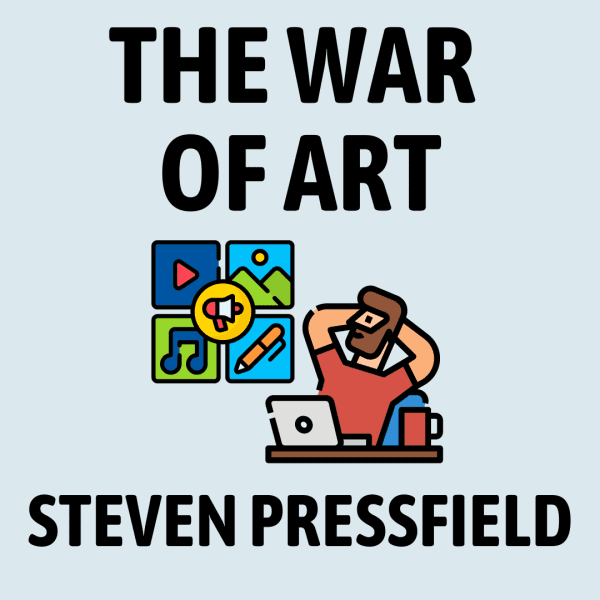














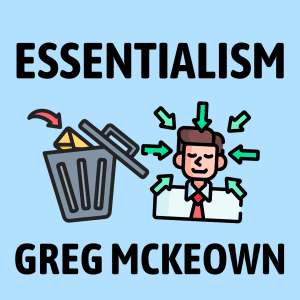


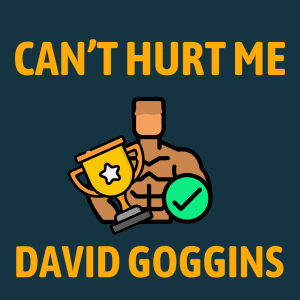
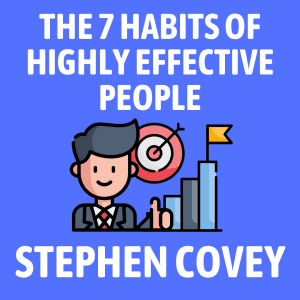
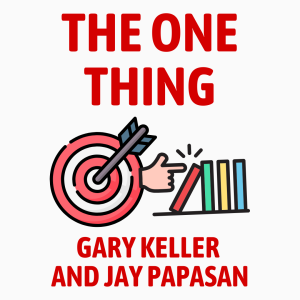
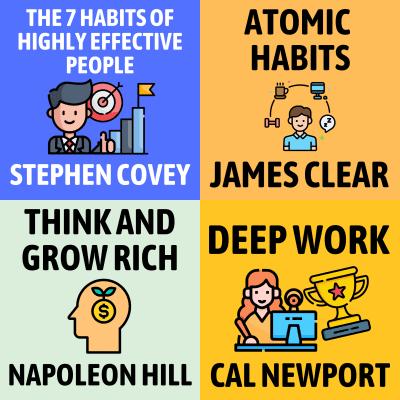
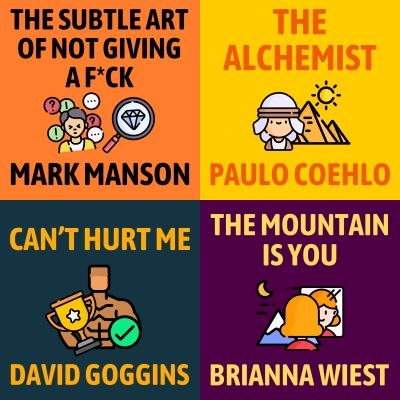
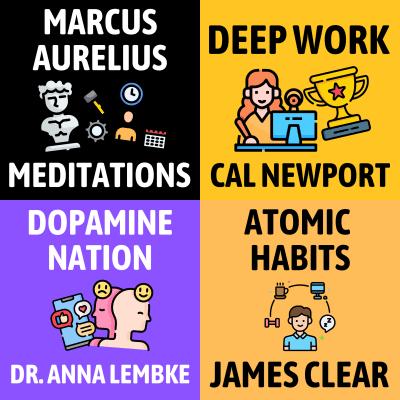

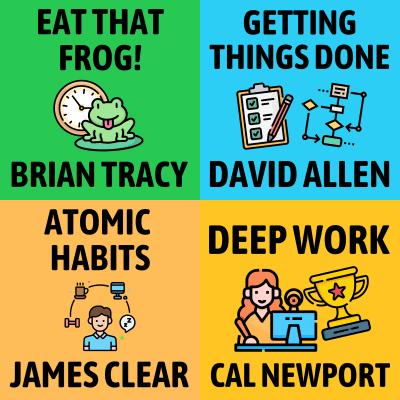
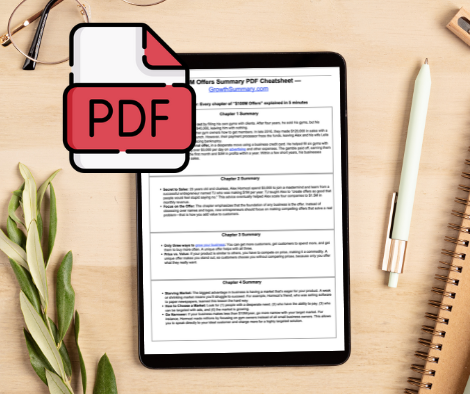
I am thankful to have access to these resources even if but for a month. I look at this as an opportunity and hope to take full advantage of the knowledge given by so many who either have studied or been through some of the struggles that have drawn me in. Your time and effort,I truly appreciate.